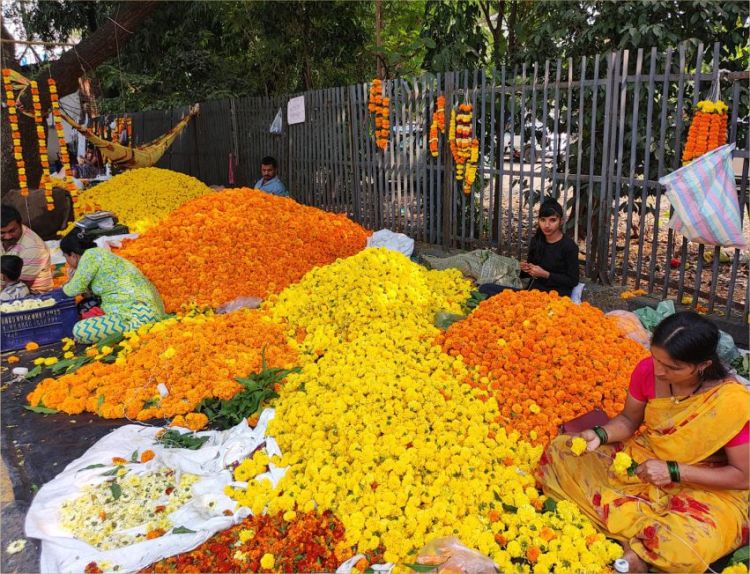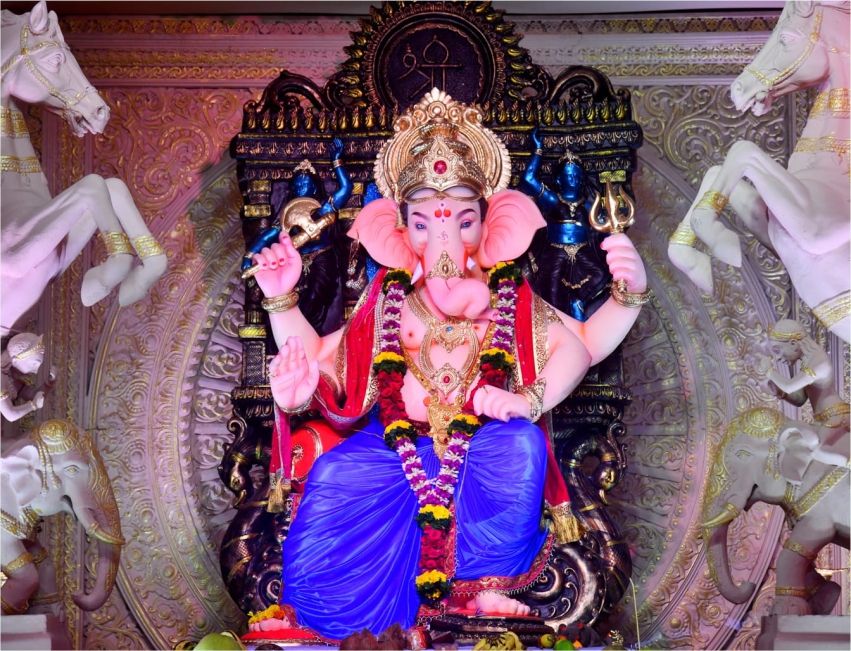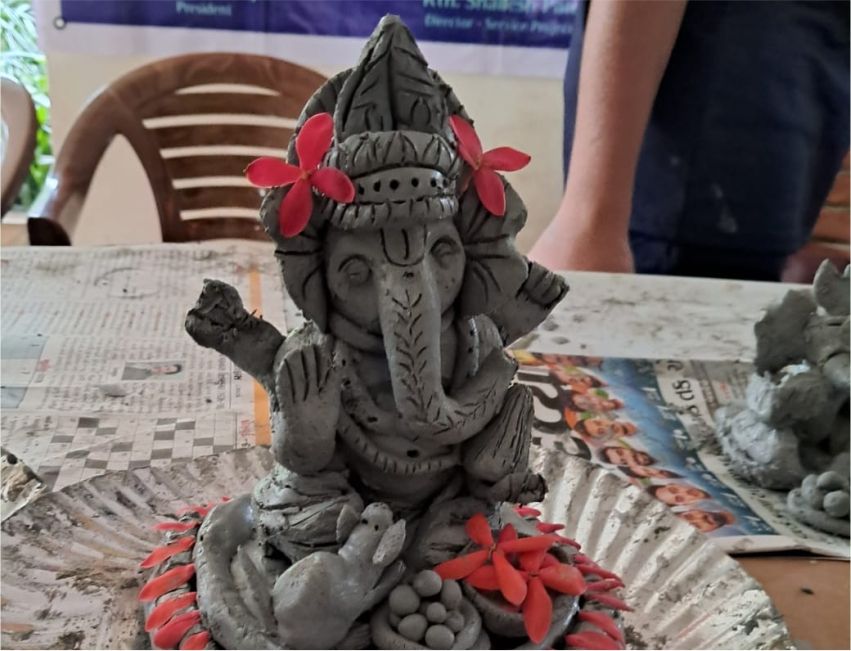Dussehra celebrations see a rise in toran prices

- Chandrashekhar Hendve
- 23 Oct, 2023
Dussehra, a time for celebrating the victory of good over evil, involves the creation of colourful torans made from rice corn, mango leaves, marigolds, and various wild flowers. These torans are used to adorn homes, buildings, vehicles, and various household items, symbolizing the presence of the goddess Lakshmi. However, the growing environmental challenges, such as the destruction of rice farming land, hills, and trees, have led to an increase in the cost of these traditionally crafted torans.
The escalating cost of raw materials can be attributed to a variety of factors. A mere ten stalks of rice are now being sold for Rs. 15 to Rs. 30, while a single branch of mango leaves ranges from Rs. 10 to Rs. 25. Even a pair of wild flowers, a must in toran decorations, can set you back anywhere from Rs. 20 to Rs. 40.
The environmental repercussions of agriculture and hill paddy crop destruction, mango tree depletion, and the scarcity of wild flowers have driven up the prices of these naturally growing plants. Consequently, the torans traditionally made for Dussehra celebrations have become more expensive.
In the past, Apatya tree leaves were traditionally given as a symbol of gold on Dussehra. However, due to the extensive reduction of these Apta trees, Dussehra Apta leaves has become increasingly rare, consequently raising the price of these leaves, which were once widely available for free.
Despite these challenges, tribal communities residing in the hilly regions of Thane, Navi Mumbai, Panvel, and Uran, continue to work tirelessly to create and sell these torans. The essence of tradition remains alive and well, as they endeavour to preserve the cultural and spiritual significance of Dussehra.





